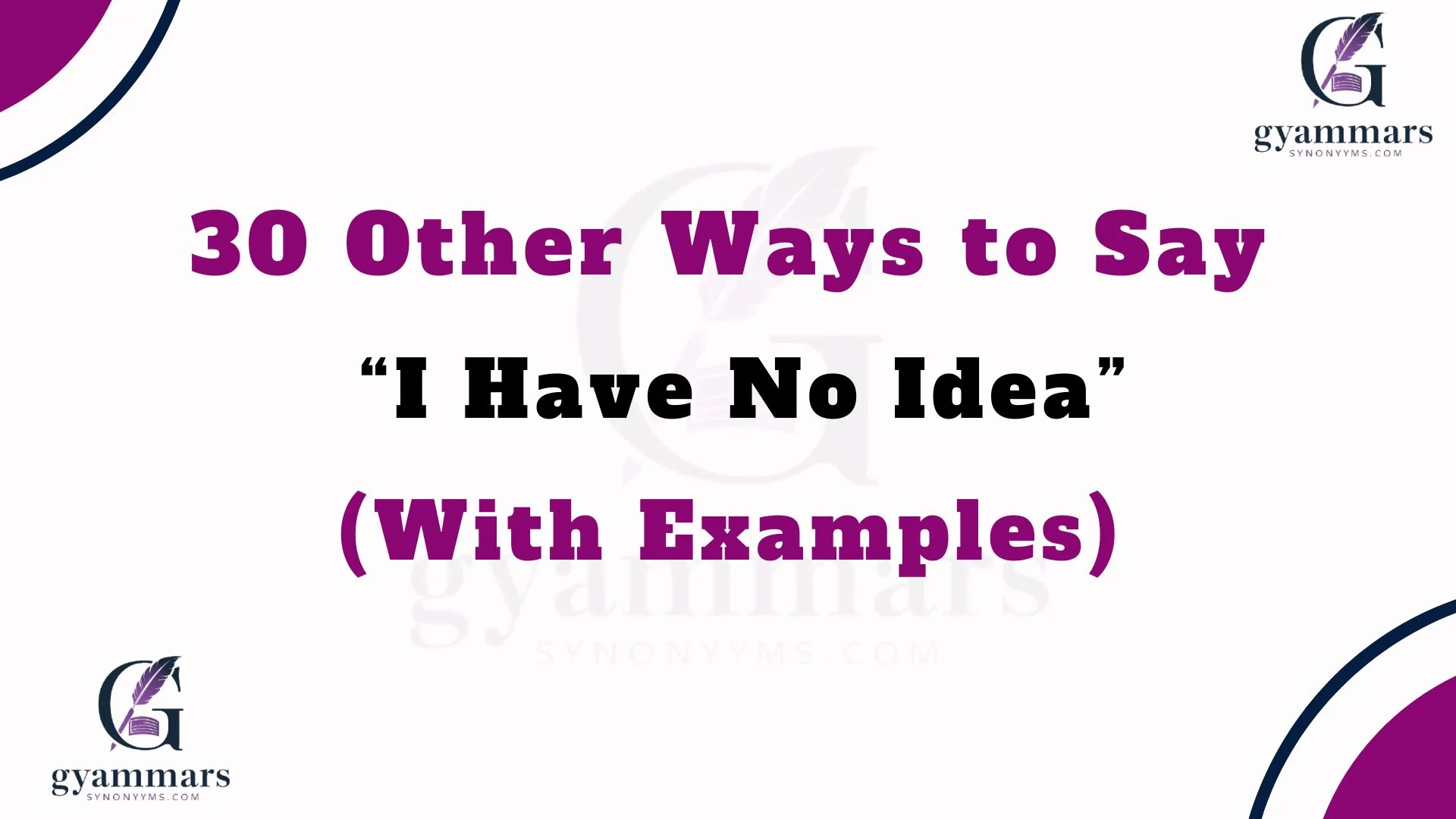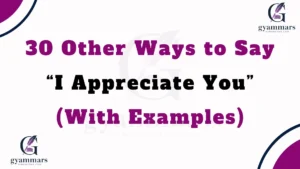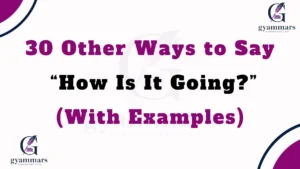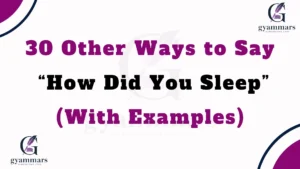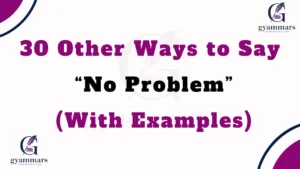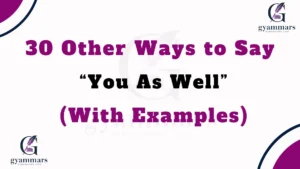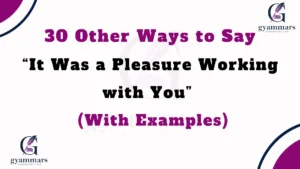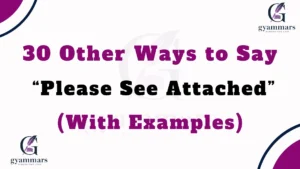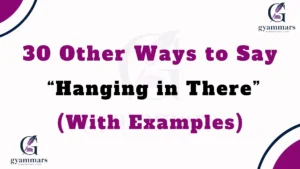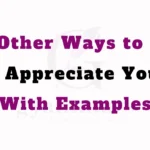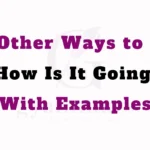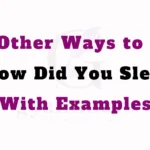Finding the right words to express uncertainty can make a huge difference in how your message feels. Saying “I have no idea” can sound blunt or dismissive at times, but there are many warmer, more thoughtful ways to express the same meaning. Whether you’re in a professional setting, a friendly chat, or an emotional conversation, the right phrasing helps you sound kind, respectful, and engaged—even when you don’t know the answer.
What Does “I Have No Idea” Mean?
The phrase “I have no idea” means that you don’t know something or lack information about a topic. It’s a straightforward expression of uncertainty or confusion.
However, depending on tone and context, it can sound honest or abrupt. For instance, in a casual chat, it may be perfectly fine—but in a professional or emotional setting, it might come across as disinterested.
Is It Professional/Polite to Say “I Have No Idea”?
Saying “I have no idea” isn’t rude, but it can sometimes sound too direct or unrefined—especially in formal communication.
Polite alternatives show that you’re still engaged, willing to help, or curious to find out more.
Blunt phrasing, on the other hand, might unintentionally sound careless or unhelpful.
If you want to keep conversations positive, it’s better to rephrase uncertainty in a way that sounds open, curious, and respectful.
Pros and Cons of Saying “I Have No Idea”
| Pros | Cons |
| Honest and direct | May sound dismissive |
| Easy to understand | Lacks empathy |
| Works in casual talk | Not ideal for work settings |
| Expresses genuine confusion | Can feel abrupt in emotional moments |
Synonyms For “I Have No Idea”
- I’m Not Sure
- I’m Not Certain
- I’m Unsure
- I Can’t Say for Certain
- I Don’t Know Yet
- That’s a Good Question
- I’ll Have to Look Into That
- I’m Still Figuring That Out
- I Don’t Have That Information Right Now
- I’ll Need to Double-Check
- I’m Not Fully Aware
- I Haven’t Heard About That
- I Can’t Recall
- I’m Drawing a Blank
- Beats Me
- I Have No Clue
- I’m Not Informed on That
- I Don’t Have the Details Yet
- I’m Still Learning About That
- That’s Beyond My Knowledge
- I Can’t Answer That Right Now
- Let Me Get Back to You
- I Don’t Think I Know That
- I’ll Find Out for You
- I Need to Check That First
- I’m Guessing Here
- I’m Completely Lost
- I Don’t Have the Answer
- I’m Not Familiar With That
- Your Guess Is as Good as Mine
1. I’m Not Sure
Definition: A polite way to say you’re uncertain.
Explanation: It shows humility and leaves room for further discussion.
Example: “I’m not sure, but I can check and let you know.”
Best Use: Professional and friendly conversations.
Tone: Polite, thoughtful.
Additional Notes: Great for emails or when maintaining professionalism.
2. I’m Not Certain
Definition: Another refined way to show uncertainty.
Explanation: Sounds slightly more formal than “I’m not sure.”
Example: “I’m not certain about the details, but I’ll verify.”
Best Use: Business meetings or client calls.
Tone: Formal, respectful.
Additional Notes: Works well in written communication.
3. I’m Unsure
Definition: A softer version of “I don’t know.”
Explanation: Suggests mild uncertainty without sounding dismissive.
Example: “I’m unsure about that answer, let’s confirm.”
Best Use: Friendly or professional settings.
Tone: Neutral, cooperative.
Additional Notes: Keeps the tone collaborative.
4. I Can’t Say for Certain
Definition: Expresses careful hesitation.
Explanation: Shows honesty and consideration before making a statement.
Example: “I can’t say for certain, but that sounds likely.”
Best Use: Thoughtful discussions or formal settings.
Tone: Polite, reflective.
Additional Notes: Adds credibility by not overstating confidence.
5. I Don’t Know Yet
Definition: Indicates you’ll find out soon.
Explanation: Keeps the conversation open-ended and proactive.
Example: “I don’t know yet, but I’ll get back to you.”
Best Use: Work updates or planning discussions.
Tone: Honest, proactive.
Additional Notes: Suggests responsibility and follow-up.
6. That’s a Good Question
Definition: Acknowledges curiosity while showing appreciation.
Explanation: A polite delay before finding an answer.
Example: “That’s a good question, I’ll need to think about it.”
Best Use: Meetings or interviews.
Tone: Friendly, thoughtful.
Additional Notes: Builds rapport by valuing others’ input.
7. I’ll Have to Look Into That
Definition: A professional response implying further research.
Explanation: Shows willingness to seek accurate info.
Example: “I’ll have to look into that and get back to you.”
Best Use: Work-related or client situations.
Tone: Professional, reliable.
Additional Notes: Keeps trust and accountability intact.
8. I’m Still Figuring That Out
Definition: Indicates an ongoing process of understanding.
Explanation: Shows you’re learning or exploring.
Example: “I’m still figuring that out, but I’ll update you soon.”
Best Use: Team discussions or personal reflection.
Tone: Honest, engaged.
Additional Notes: Reflects a growth mindset.
9. I Don’t Have That Information Right Now
Definition: States lack of info clearly but politely.
Explanation: Ideal for formal replies.
Example: “I don’t have that information right now, but I’ll check.”
Best Use: Customer service or office settings.
Tone: Courteous, factual.
Additional Notes: Maintains professionalism.
10. I’ll Need to Double-Check
Definition: Suggests care and accuracy.
Explanation: You want to confirm before giving a response.
Example: “I’ll need to double-check before confirming that.”
Best Use: Workplace or research contexts.
Tone: Responsible, thoughtful.
Additional Notes: Shows thoroughness.
11. I’m Not Fully Aware
Definition: Expresses partial knowledge.
Explanation: Suggests openness to learn more.
Example: “I’m not fully aware of the situation yet.”
Best Use: Meetings, updates.
Tone: Neutral, professional.
Additional Notes: Keeps communication transparent.
12. I Haven’t Heard About That
Definition: States you’re unfamiliar with something.
Explanation: Friendly and conversational tone.
Example: “I haven’t heard about that before—tell me more!”
Best Use: Social or team settings.
Tone: Curious, friendly.
Additional Notes: Invites conversation.
13. I Can’t Recall
Definition: Means you can’t remember something at the moment.
Explanation: Gentle and honest phrasing.
Example: “I can’t recall exactly when that happened.”
Best Use: Interviews or reflective talks.
Tone: Calm, sincere.
Additional Notes: Works well in formal speech.
14. I’m Drawing a Blank
Definition: Informal phrase for forgetting something temporarily.
Explanation: Relatable and natural.
Example: “I’m drawing a blank right now—give me a sec!”
Best Use: Casual chats or brainstorming sessions.
Tone: Light, humorous.
Additional Notes: Adds a relaxed vibe.
15. Beats Me
Definition: A casual way of saying you don’t know.
Explanation: Sounds playful but informal.
Example: “Beats me! I wish I knew the answer.”
Best Use: Friendly conversations.
Tone: Lighthearted, informal.
Additional Notes: Avoid in formal settings.
16. I Have No Clue
Definition: Informal synonym of “I have no idea.”
Explanation: Stronger emphasis on lack of knowledge.
Example: “I have no clue what happened there.”
Best Use: Casual talks.
Tone: Honest, relaxed.
Additional Notes: Use sparingly in work contexts.
17. I’m Not Informed on That
Definition: Expresses that you haven’t received info.
Explanation: Sounds factual and polite.
Example: “I’m not informed on that matter yet.”
Best Use: Office communication.
Tone: Formal, neutral.
Additional Notes: Professional and clear.
18. I Don’t Have the Details Yet
Definition: States partial knowledge clearly.
Explanation: Suggests progress without being final.
Example: “I don’t have the details yet, but we’ll know soon.”
Best Use: Team coordination.
Tone: Responsible, positive.
Additional Notes: Shows initiative.
19. I’m Still Learning About That
Definition: Expresses humility and curiosity.
Explanation: Acknowledges you’re gaining understanding.
Example: “I’m still learning about that subject.”
Best Use: Academic or mentoring settings.
Tone: Open-minded, humble.
Additional Notes: Encourages continued learning.
20. That’s Beyond My Knowledge
Definition: Expresses limits of understanding respectfully.
Explanation: Acknowledge expertise boundaries.
Example: “That’s beyond my knowledge, but I can refer someone.”
Best Use: Expert or advisory roles.
Tone: Polite, confident.
Additional Notes: Protects credibility.
Also Read This :30 Other Ways to Say “It Was a Pleasure Meeting You” (With Examples)
21. I Can’t Answer That Right Now
Definition: Delays response respectfully.
Explanation: Suggests need for time or data.
Example: “I can’t answer that right now, but I’ll follow up.”
Best Use: Meetings, emails.
Tone: Professional, patient.
Additional Notes: Good for temporary deferral.
22. Let Me Get Back to You
Definition: Promises to provide information later.
Explanation: Shows accountability and responsiveness.
Example: “Let me get back to you with that answer.”
Best Use: Work or business contexts.
Tone: Helpful, polite.
Additional Notes: Keeps communication active.
23. I Don’t Think I Know That
Definition: A soft and friendly denial.
Explanation: Sounds conversational and humble.
Example: “I don’t think I know that off the top of my head.”
Best Use: Informal exchanges.
Tone: Casual, kind.
Additional Notes: Avoids sounding dismissive.
24. I’ll Find Out for You
Definition: Shows willingness to help.
Explanation: Turns uncertainty into action.
Example: “I’ll find out for you and get back soon.”
Best Use: Customer support, teamwork.
Tone: Supportive, proactive.
Additional Notes: Builds trust.
25. I Need to Check That First
Definition: Suggests due diligence.
Explanation: Implies caution before answering.
Example: “I need to check that first before confirming.”
Best Use: Professional or research settings.
Tone: Responsible, formal.
Additional Notes: Great for leadership communication.
26. I’m Guessing Here
Definition: Indicates speculation or assumption.
Explanation: Honest about uncertainty.
Example: “I’m guessing here, but maybe it’s due to timing.”
Best Use: Brainstorming or informal chats.
Tone: Honest, light.
Additional Notes: Builds transparency.
27. I’m Completely Lost
Definition: Expresses full confusion.
Explanation: Shows vulnerability in a human way.
Example: “I’m completely lost—can you explain that again?”
Best Use: Learning or emotional contexts.
Tone: Honest, open.
Additional Notes: Invites clarification.
28. I Don’t Have the Answer
Definition: Straightforward but polite.
Explanation: Neutral tone for professional use.
Example: “I don’t have the answer, but I can ask around.”
Best Use: Work, school, or research.
Tone: Neutral, cooperative.
Additional Notes: Balanced honesty.
29. I’m Not Familiar With That
Definition: Admits lack of exposure.
Explanation: Sounds professional and calm.
Example: “I’m not familiar with that process yet.”
Best Use: Work or educational settings.
Tone: Polite, humble.
Additional Notes: Keeps dialogue open.
30. Your Guess Is as Good as Mine
Definition: A friendly, idiomatic way to share uncertainty.
Explanation: Adds humor to shared confusion.
Example: “Your guess is as good as mine on that one!”
Best Use: Friendly or team conversations.
Tone: Light, humorous.
Additional Notes: Builds camaraderie.
Conclusion
Saying “I have no idea” doesn’t have to sound cold or abrupt. With these 30 thoughtful alternatives, you can express uncertainty while staying warm, polite, and engaged. The right phrasing helps build trust, shows emotional intelligence, and makes conversations smoother—whether at work, school, or home.
FAQs
1. What can I say instead of “I have no idea” professionally?
You can say “I’m not sure,” “I’ll look into that,” or “I don’t have that information right now.”
2. Is it rude to say “I have no idea”?
Not always, but it can sound abrupt depending on tone. Use softer alternatives for professional or emotional situations.
3. Which phrase is best for texting friends?
Try “Beats me,” “Your guess is as good as mine,” or “I’m drawing a blank.”
4. What’s a formal way to say “I have no idea”?
Use “I’m not certain,” “I’ll have to look into that,” or “That’s beyond my knowledge.”
5. What’s the kindest way to admit uncertainty?
Say “I’m still learning about that” or “I don’t know yet, but I’ll find out.”

“Mia Rose at Grammar Synonyms is your ultimate guide to mastering language with style and precision. Whether you’re looking to enhance your vocabulary, perfect your grammar, or discover the ideal synonym, Mia Rose offers expert resources and creative solutions to help you express yourself flawlessly. With Grammar Synonyms, unlock a world of language possibilities and elevate every piece of writing you create.
